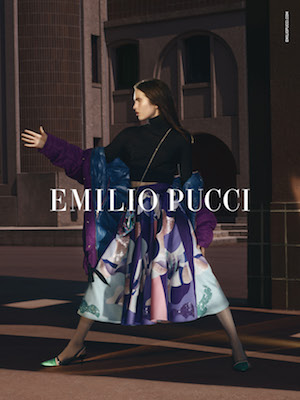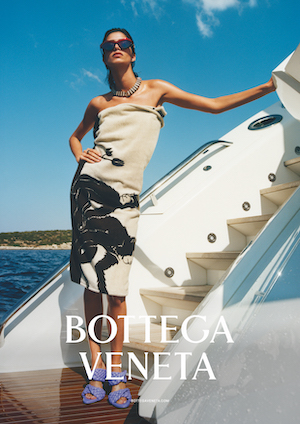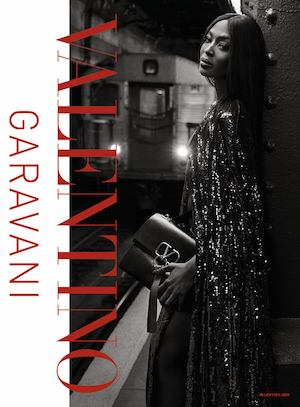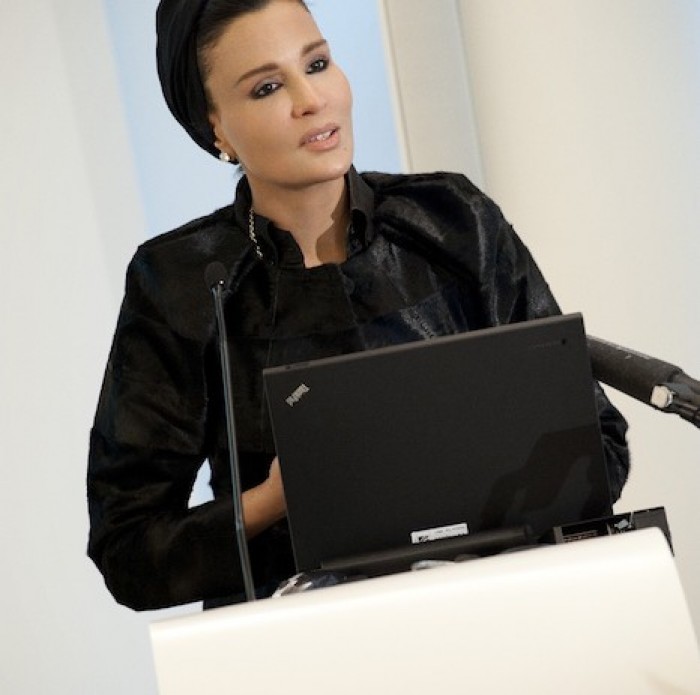Mouna Ayoub: The Queen of Haute Couture
Mouna Ayoub has been an avid collector of haute couture for over 35 years. Her name conjures images of exquisite designer fashions and stunning couture dresses and gowns. She’s the owner of the world’s largest haute couture collection – a collection so big that many of the pieces have never been worn. Couture houses in Paris have their own “Mouna Mannequin” allowing couturiers to tailor clothes to her exact measurements when she is not available for a fitting. A mother of five, Mouna Ayoub is widely known as a couture philanthropist, having donated more than a hundred pieces to charities, notable causes and museums. These include an exquisite Chanel dress and cuissardes to the Met Museum in New York and eight pieces to the Musée de la Mode in Marseilles. Last year, Ayoub donated the most expensive couture dress ever made – a $410,000 Chanel gown embroidered in gold – to the Musée des Arts Decoratifs in Paris.
Today’s Outlook caught up with the ever-glamorous Ayoub to learn about her latest projects and activities.
Your haute couture collection continues to grow even though it is the largest in the world now. How many pieces do you currently have?
It’s a bit tricky to keep track of the collection. I sold 40 pieces during my last auction. I’ve also donated many pieces to various organizations and museums, and unfortunately some pieces were stolen during my travels. Nevertheless, the collection continues to grow. I currently have eight new pieces on order, including a fabulous dress still being embroidered at Chanel from the Summer 2014 collection. It is a very unique piece and it has taken a long time to complete. With the recent arrival of John Galliano to the haute couture scene I’m sure I’ll be acquiring many more. But as of now, I can say that the collection consists of around 1,450 pieces.
Some people collect paintings. You collect haute couture. Do you feel that you are a patron of this little known art? Does haute couture need more devotees like yourself to keep it alive?
Of course! This is the primary purpose of what I do! I don’t attend many parties. In fact, when I get invited to a party, ball or gala event the answer is almost always ‘No.’ And weddings are a nightmare for me. I don’t order haute couture clothes to wear them to social outings. I order them because I love this art, which I consider a rare savoir-faire—something that is special to the French and some Italian people. Sometimes I order them because of their incredible beauty, and sometimes because of how much work is involved in making them and because they provide job opportunities for many highly skilled and talented artisans whose numbers are rapidly diminishing year after year. I love to support the people behind the scenes who spend hours with the designer to make an idea come to life. Not every idea works, but the ones that do are magnificent. There are many artisans behind the scenes who do the embroidery, the hats, the gloves, the buttons and the feathers. So yes, you can say I’m a patron of the haute couture industry, and of the creative people who continue to innovate and contribute to this very unique form of art. I can tell you that over the past 36 years that I’ve been collecting haute couture, the changes I have seen in the industry are considerable. The materials that are used, the treatments that are performed and the techniques applied are constantly evolving. For example, the machinery that treats the leather and other fine materials has seen some improvements. The one thing that hasn’t changed very much, however, is the hand applications, the embroidery, the way gloves and hats are made, and the use of feathers. These techniques are still nearly the same as they were more than three decades ago.
What is the single most expensive item from the collection?
Until about a month ago it was a dress from the noble house of Chanel. Now, however, that dress has been topped by a piece that is so innovative and utterly fabulous that it deserves top prize in any competition! I won’t tell you the cost. What I can say is that it is truly a work of art, and well worth it. It’s a very special piece that no museum has ever displayed. It is even better than a Schiaparelli, or a Dior, or a Chanel, or anything you have ever seen.
How are the pieces organized and cared for?
The older pieces are stored in boxes, just like they would be in a museum. They are all “mannequinée” meaning that each dress or suit is stuffed with special anti-moth and anti-dust silk paper, as if the body of a woman is in it. In this case, it is my body. The boxes are then stored in an environmentally controlled place where there is no light, no humidity, and no insects. The 300 or so newer pieces are with me in Monaco. Only the embroidered newer pieces are in boxes, because embroidered dresses shouldn’t be placed on hangers; they must be “mannequinée” and kept in a large box that is nearly as large as the size of the dress. We order the boxes from a company in Germany that specializes in making boxes that are anti-light, anti-moth, and anti-humidity.
Looking toward the future, what are your plans for such a large collection of haute couture gowns? Do you think you might place some up for auction, or organize an exhibit of some type and share them with the world?
My preference and number one priority project at the moment is to choose the 500 best pieces and feature them in a book that illustrates my personal story with haute couture, and how my passion for this art began years ago. I will dedicate the book to my mother, who loved couture, and will present my readers with my favorite couturiers, as I know them and as I see their creations through my eyes.
If my collection reaches 50 [years], then I suspect that some of the pieces would be sold. That said, it would be wonderful if the collection could be preserved until it’s 100 years old so future generations can visit fashion museums and learn the story of artistic clothing from our time, to 100 years from now. Sadly, none of my children appear interested in my collection, and none of them have expressed interest in preserving it for that long. For me, I can't imagine anything more interesting, other than perhaps traveling to the moon.
You recently sold 3,000 pieces of your prêt-à-porter collection. What prompted you to organize this sale?
The collection was becoming very large for the space I have in Monaco, and I wanted to help three of my favorite associations. With the arrival of my new couture orders, I prefer to fill my rooms with haute couture and accessories rather than prêt-à-porter. Periodic sales also help with the upkeep of my haute couture collection, such as ordering new boxes and finding new rooms for the older collections.
How do you feel when you let go of such a large number of unique items?
I have mixed feelings. I feel very happy to be contributing to the associations I support, while at the same time I feel a bit melancholic because I will no longer own such unique pieces.
It's been many years since our last interview. Tell us how you're spending your days now. Are you socially involved and physically active?
I have not been particularly involved socially in the past, even when I sometimes received certain types of recognition, medals and honors for doing this and that. I really am not a social beast. The 23 years I spent in Riyadh made me a bit of a controversial person. In a world that, in my view, remains a man's world, I can really only feel comfortable in Cannes. Many women come here alone, and walk the red carpet alone. And you are respected for who you are, not for who your husband is. This is the only place where I really like to go out alone.
I usually decline invitations to most big events. Society and the media can be cruel. If you don’t have a husband you can be type-casted, no matter how true to yourself you are. I enjoy staying home and working on new projects. I don’t delegate things to others. I work until I drop; and then I go out jogging. After watching the 8:00PM news, I watch three movies. Sometimes on the weekends, I can squeeze in a fourth one. I don’t go out to dine with many people; it’s usually with my children and with couture people when I am in Paris.





































